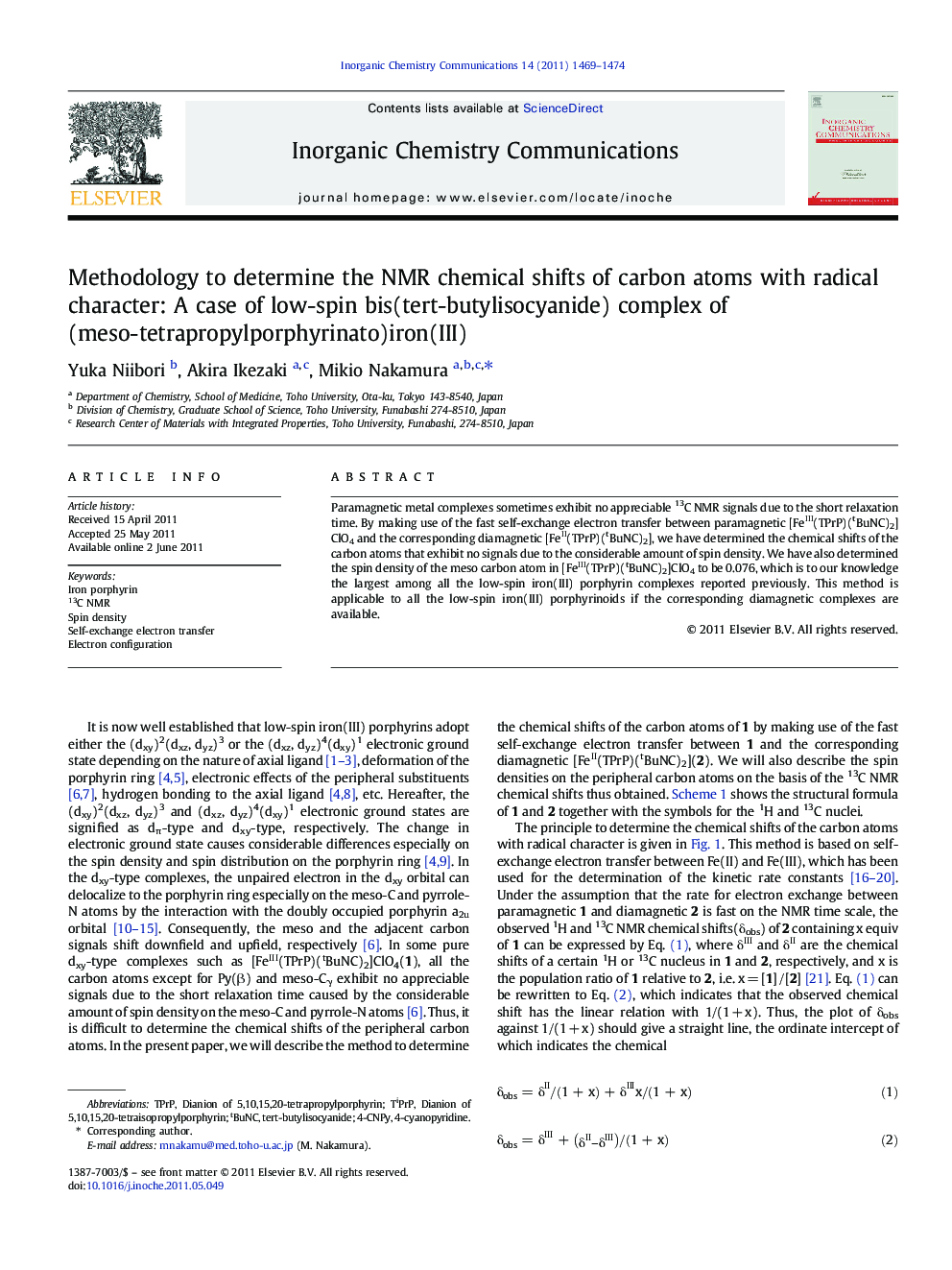| Article ID | Journal | Published Year | Pages | File Type |
|---|---|---|---|---|
| 1302567 | Inorganic Chemistry Communications | 2011 | 6 Pages |
Paramagnetic metal complexes sometimes exhibit no appreciable 13C NMR signals due to the short relaxation time. By making use of the fast self-exchange electron transfer between paramagnetic [FeIII(TPrP)(tBuNC)2]ClO4 and the corresponding diamagnetic [FeII(TPrP)(tBuNC)2], we have determined the chemical shifts of the carbon atoms that exhibit no signals due to the considerable amount of spin density. We have also determined the spin density of the meso carbon atom in [FeIII(TPrP)(tBuNC)2]ClO4 to be 0.076, which is to our knowledge the largest among all the low-spin iron(III) porphyrin complexes reported previously. This method is applicable to all the low-spin iron(III) porphyrinoids if the corresponding diamagnetic complexes are available.
Graphical abstractThe chemical shifts of the peripheral carbon atoms in 1, which exhibit no appreciable 13C NMR signals due to the radical character of the complex, were determined by making use of the fast self-exchange electron transfer between low-spin iron(III) and the corresponding diamagnetic iron(II) porphyrin complex.Figure optionsDownload full-size imageDownload as PowerPoint slideResearch highlights► Formation of the low-spin iron(III) complex of meso-tetrapropylporphyrin complex carrying tert-butylisocyanide as axial ligand. ► Methodology to determine the NMR chemical shifts of the carbon atoms with radical characters. ► Determination of the spin densities on the peripheral atoms on the basis of the 13C NMR and 1H NMR chemical shifts.
